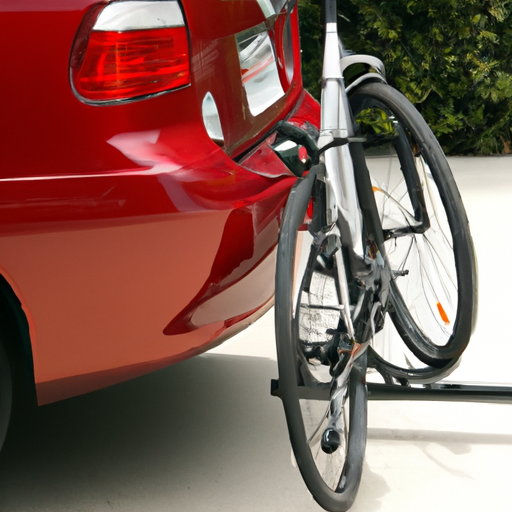How Do I Properly Store My Bike During Extended Periods Of Non-use?
If you find yourself in a situation where you won’t be able to ride your bike for an extended period of time, it’s important to know how to properly store it to maintain its condition. Whether it’s due to winter weather or unexpected circumstances, taking the right steps to store your bike can prevent unnecessary damage and keep it in tip-top shape for when you’re ready to hop back on. In this article, we’ll explore some key tips and tricks to ensure your bike stays safe and sound during those non-use periods.
Inspect and clean your bike
Before storing your bike, it’s important to give it a thorough inspection and cleaning. Start by checking for any damages or signs of wear and tear. Look for any cracks in the frame, loose bolts, or worn-out brake pads. Pay attention to the tires as well, and replace them if the tread is worn down.
Once you’ve inspected the bike, it’s time to give it a good cleaning. Use a bucket of warm water and mild detergent to clean the frame, wheels, and other parts. Scrub away any dirt or grime, making sure to pay attention to hard-to-reach areas. Rinse the bike thoroughly with clean water and dry it off with a soft cloth. Cleaning your bike not only keeps it looking nice, but it also helps prevent rust and corrosion.
Remove and store accessories
Before storing your bike, it’s important to remove any removable accessories. Take off items like lights, water bottle holders, and bike computers. These accessories can get damaged if left on the bike during storage, especially if they’re exposed to moisture. Removing them ensures that they stay in good condition and are ready to be used when you take your bike out again.
After removing the accessories, it’s crucial to store them in a dry and safe place. Find a shelf or a box where they won’t get knocked around or crushed. Keeping them in a separate location from your bike reduces the risk of damage and makes it easier to find them when you need them.
Deflate the tires
To prevent damage to your bike’s tires during storage, it’s essential to deflate them slightly. Reduced air pressure helps prevent excessive pressure build-up or temperature changes, which can lead to tire damage. Use a tire pressure gauge to let out some air and bring the pressure down to a safe level.
When deflating your tires, be sure not to let them go completely flat. Leaving a minimal amount of air inside helps maintain their shape and prevents the tires from becoming misshapen. It’s also a good idea to mark the correct tire pressure somewhere on the bike so that you remember to inflate them properly when it’s time to ride again.
Protect the frame
The frame of your bike is its most important component, so it’s crucial to protect it from potential damage during storage. Once you’ve cleaned your bike, consider covering it with a protective cover or a tarp. This helps shield it from dust, moisture, sunlight, and any other elements that could harm the paint or finish.
When choosing a cover, make sure it is made from breathable material, allowing any trapped moisture to escape. Avoid using plastic covers as they can trap moisture and promote rusting. A good quality cover will provide an extra layer of protection and keep your bike looking great.
Choose a suitable storage location
Finding the right storage location for your bike is vital to keep it in optimal condition during non-use. Look for a dry and well-ventilated space, such as a garage, shed, or indoor storage room. Moisture can cause rust and damage to your bike, so avoiding areas with high humidity is essential.
Additionally, it’s important to avoid storing your bike in areas with extreme temperature fluctuations. Rapid changes in temperature can cause the frame and parts to expand and contract, leading to damage over time. Try to find a storage location where temperatures remain relatively stable and within a range that won’t affect your bike negatively.
Use a bike stand or rack
Investing in a bike stand or rack is highly recommended when it comes to bike storage. These devices hold your bike upright, preventing it from leaning against walls or falling over during storage. By supporting your bike properly, you can avoid any potential damage that can occur when it’s not in use.
Bike stands and racks come in various designs, including floor-standing, wall-mounted, or ceiling-mounted options. Choose one that suits your space and needs best. Not only will it provide a safe storage solution, but it will also help save space and make it easier to access and work on your bike when necessary.
Secure the bike
Even when in storage, it’s important to secure your bike to prevent theft or any accidental damage. Use a sturdy object, such as a bike rack or a solid post, to lock your bike to. This ensures that it remains in place and reduces the risk of it being knocked over or stolen.
Investing in a high-quality bike lock is essential to ensure the security of your bike. Look for a lock that is sturdy, durable, and difficult to tamper with. Choose a lock that suits your specific needs, whether it’s a heavy-duty chain lock or a U-lock. Always lock your bike through the frame, as this is the most secure attachment point.
Monitor and maintain
Storing your bike doesn’t mean forgetting about it entirely. It’s important to regularly check on your bike, especially if it’s stored for an extended period. Take a few minutes every couple of weeks to inspect the overall condition of your bike. Look for any signs of damage, rust, or other issues that may have occurred during storage.
In addition to visual inspections, perform maintenance tasks as necessary. This may include lubricating the chain and other moving parts with a suitable lubricant, checking and adjusting the tire pressure, and ensuring that all bolts and connections are tight. By staying on top of maintenance, you can extend the lifespan of your bike and ensure that it’s in good working condition when you’re ready to ride again.
Prevent rust
Rust is the enemy of any bike owner, so taking steps to prevent it during storage is essential. After cleaning your bike, apply a rust inhibitor to the metal parts. This creates a protective barrier, preventing moisture and oxygen from reaching the surface and causing rust.
Consider using a dehumidifier or moisture-absorbing packets in the storage area to reduce humidity levels. Excess moisture in the air can accelerate the formation of rust, so keeping the environment as dry as possible is important. Additionally, avoid storing your bike near any chemicals or corrosive substances that could lead to corrosion or rust.
Prepare for storage duration
The duration of your bike’s storage will determine the necessary preparations and measures to take. For short-term storage, covering the bike and monitoring it periodically should be sufficient. Keep an eye on the condition of the bike, the storage environment, and quickly address any issues that arise.
However, for long-term storage, consider additional measures to ensure your bike remains in excellent condition. One option is to remove the tires and store them separately. This relieves pressure on the tires and prevents flat spots from forming over an extended period. Keep the tires inflated and store them in a dry and cool place, away from direct sunlight.
By following these tips and taking the necessary precautions, you can properly store your bike during extended periods of non-use. Remember that regular maintenance and care are key to keeping your bike in optimal condition and ready to hit the road when you’re ready to ride again.



